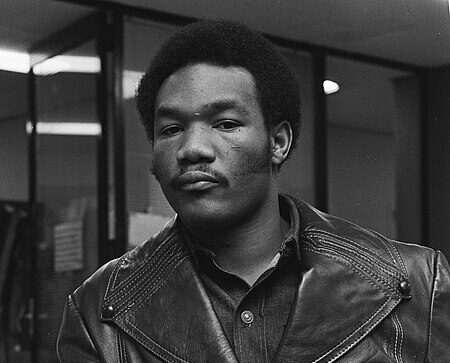Achieving success both at work and at home can take a serious toll. If you strive to give it 100 percent in all areas of your life, the math simply doesn’t add up, and you’re likely headed toward conflict and burnout.
On average, we spend a third of our lives at work; the line between personal and professional life is more blurred than ever, especially with so many people working from home or having hybrid work schedules, says Kelly Mackin, workplace well-being innovator, human behavior researcher, speaker, CEO of Motives Met, and bestselling author of the book Work Life Well-Lived. Hence, it’s more important than ever to figure out how to set boundaries so that both your work and personal space remain sacred in their own right.
The good news is that you are not alone. Randstad’s latest Workmonitor report, which assessed input from more than 26,000 workers, found that for the first time, work-life balance is more important than pay (83 percent versus 82 percent). Workers are taking action if their expectations are not met, with 45 percent advocating for better conditions at work and 44 percent quitting if their workplace becomes toxic.
Fortunately, you can employ several actionable strategies to help you manage your professional and personal life.
What Is Work-Life Balance And Why Is It Important?
Whether you call it work-life balance, work-life harmony or work-life flow, the idea is that you get to “harmonize work and life in a way that works for you,” according to Mackin’s “Motives Met Work-Life Harmony Playbook” report. It’s about creating a relationship between work and personal life to ensure they complement, rather than compete, with each other. Without this balance, you may start to see your relationships, health, and mood deteriorate.
According to the report, almost 30 percent of workers feel their workday is a race from start to finish, and half say they need to work outside of their set work hours to get their work done. This constant stress can eventually impact you mentally, emotionally, and physically, says Mackin.
“The overwhelm, the stress, the burnout, and from my…own personal background, it started to physically take over my body,” recalls Mackin. “I developed a sleep disorder…It got so bad my left eye would twitch, my hands would shake, I’d have panic attacks at work.”
Why Work Shouldn’t Come At The Cost Of Your Life
The constant grind and number of hours many people work without taking a break to focus on loved ones, health, hobbies or rest leads to a lack of well-being. “…[N]ot having any of the important needs [met]…infiltrated every part of my life. …it bleeds into our lives outside of work because everything is so interconnected,” Mackin shares.
How to Keep Your Work And Personal Life Separate
Balancing work and life doesn’t come naturally; it takes some effort to make it happen. “…[W]e have to show up and be intentional [to] create the life that we want,” advises Mackin. “…[W]ork-life harmony is crafted by you. It’s not given to you. You have to be proactive in strategies, not only with other people, but also with yourself.”
Here are some of these strategies to help keep work and home life separate.
Create Physical Boundaries
Setting physical boundaries is critical for those working in an office environment. Close your door when you need to focus on a project. Leave the office for lunch or take a mid-afternoon walk to create space for yourself. When it comes to your in-office work hours, don’t be afraid to advocate for yourself by asking your supervisor for some flexibility, advises Mackin.
Establish Clear Communication Guidelines
Email communication can be a top stressor if expectations are misaligned. You may not enjoy receiving emails late at night or during the weekend because you think you need to respond immediately. However, your colleagues may just send emails when it’s convenient for them, knowing that you won’t respond until you return to your desk on Monday morning.
The best way to turn down the stress dial is to communicate with your colleagues and clients. “Telling people your work style and then asking them about theirs goes a really long way because then they…understand where you’re coming from,” says Mackin. Getting clarity on what’s urgent and important versus what’s not is also so helpful, she says.
Set And Stick To A Work Schedule
The more consistent you are with your work schedule, the easier it will be for you to keep your work and personal life separate. Mackin recommends adding your work hours to your email signature to clearly communicate when you will be at your desk. It’s also a good idea to add an out-of-office message to your email and voicemail when taking vacation days.
Disconnect After Work
Knowing when to walk away from your computer to enjoy your family and other aspects of your personal life is imperative. It’s helpful to create a ritual at the end of the day to delineate your work time from the rest of your day. Put it on your calendar so you know when to shut down your computer. “…I have every day on my calendar…a sign off and organize files [note]…what I’m doing is saying I am shutting down for the day,” says Mackin.
Prioritize Time With Loved Ones
Work shouldn’t come at the cost of your life. If you continue to miss appointments with family and friends and disappoint them, you are bound to end up with relationship conflicts. By making the effort to prioritize time away from work with those who you care about, you will not only alleviate stress but also have fun and feel better. Stick to your personal plans by adding them to your calendar because if you don’t, it becomes too easy to stay at your desk, says Mackin.
How to Achieve Long-Term Work-Life Harmony
Work can easily start to creep back in and take over our lives if we’re not careful. That’s why it’s beneficial to adopt some habits and mindset shifts to sustain a healthy balance in the long run.
- Reflect on what works for you. Take a step back to really get to know yourself and identify what you need for a successful work-life balance.
- Monitor and adjust your work-life needs regularly. Some of what you do may be trial-and-error until you find what works best.
- Do some thought work. Identify what thoughts you don’t want to be thinking anymore that are holding you back from achieving work-life balance, says Mackin. Write these thoughts down on note cards and refer to them daily to reset your thinking patterns.
- Practice mindfulness. Set a timer for energy check-ins throughout your day so you can stop and ask yourself where your energy level is at that moment and what adjustments you need to make to feel better.
- Exercise regularly. Not only will movement lower your stress level and boost your mood, but it will also create a buffer from work.
- Take a periodic digital detox. Step away from screens, whether it’s for an hour or a week-long vacation, to reset and recharge your nervous system.
- Drop the guilt. Let go of the guilt and judgment around work-life balance because you will never satisfy others or meet the conflicting pressures that you either aren’t working hard enough or are working way too much.
Redefine Your Work-Life Balance
If you are fed up with the lack of balance in your life, try implementing these strategies to keep your work and personal life separate; doing so can help you attain happiness, career growth and long-term well-being.
Photo from Vera Prokhorova/Shutterstock.com





